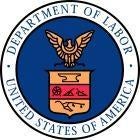The air has a distinct chill, the leaves are turning beautiful colors and you’re already sipping pumpkin spice lattes. Fall is officially here and it’s time for sweaters, Dad’s pumpkin pie and warm apple cider, but for America’s farm workers it also marks the start of harvest season. Without their efforts many of our favorite things about fall wouldn’t be possible.
Agricultural work is one of the most dangerous jobs in America. Over 49,000 injuries were reported in 2012, and agriculture had the highest fatality rate of any industry sector in 2013. That’s why the Occupational Safety and Health Administration joined the National Education Center for Agricultural Safety’s this week, Sept. 21-27, for National Farm Safety and Health Weekto emphasize the importance of safety of farms.

NECAS and OSHA agree that this harvest, we have to protect what really matters. And we think the lives of over two million farmer workers matter a lot! Thankfully, there are many ways to make agriculture safer. Here are just a few:
-
Tractor and Harvester Safety: They may be fun for hayrides, but tractors account for over half of all farm fatalities. From 1992 to 2009, roll-overs were the leading cause of death for agriculture workers. Roll-over protection bars are an extremely effective way to prevent over-turn deaths, but they are still not widely used.Additionally, employers and supervisors can take many steps to ensure the equipment is safe including: regular inspections; ensuring the tractor has adequate safety features like seatbelts, flashing lights; and training workers on safety procedures and rules of the road.
-
Grain Handling Safety: A worker can become buried in grain in less than a minute, which makes it especially important that employers protect workers entering grain bins. Suffocation is a leading cause of death in grain storage bins. Suffocation can occur when a worker becomes buried (engulfed) by grain as they walk on moving grain or attempt to clear grain built-up on the inside of a bin. “Bridged” grain and vertical piles of stored grain can also collapse unexpectedly. The behavior and weight of the grain makes it extremely difficult for a worker to get out of it without assistance. Employers must not allow workers to enter grain storage facilities without proper equipment, precautions and training.
-
Hispanic Worker Safety: Approximately one half of all farm workers are Hispanic. It’s imperative that employers provide training for farm employees in a language and vocabulary they understand. Luckily, OSHA has Spanish-language resources for employers to do just that.
These are just three ways we can keep our farm workers protected this harvest season, but these aren’t the only challenges farm workers face every day. They are also at high-risk for work-related lung diseases, heat illness, confined-space hazards, noise-induced hearing loss, fall hazards, skin diseases and certain cancers associated with chemical use and prolonged sun exposure. So while you’re navigating a haunted corn maze or munching on a candy apple, it’s important to remember and protect the people actually picking the cobs and plucking the Honey Crisp off the tree.


 />i
/>i

